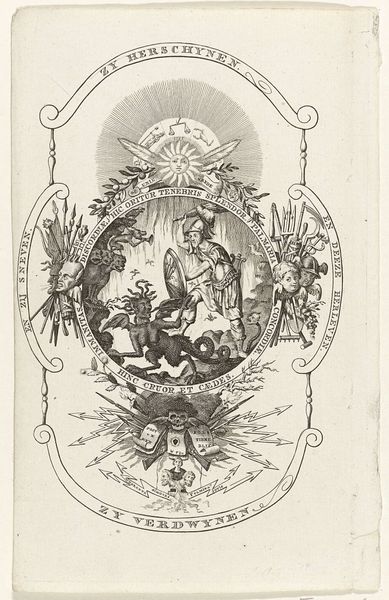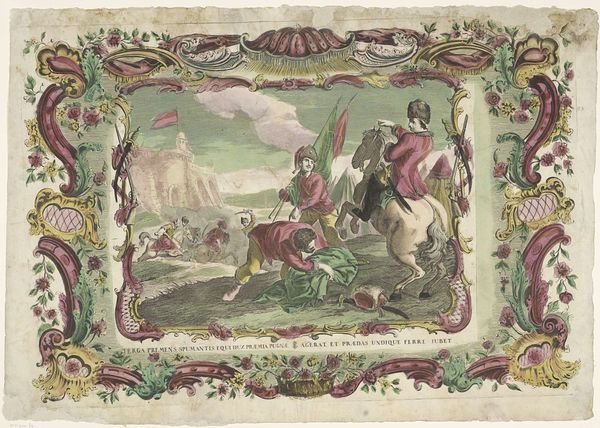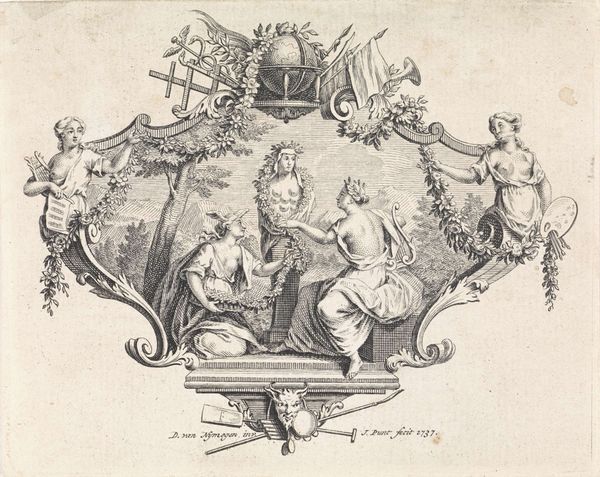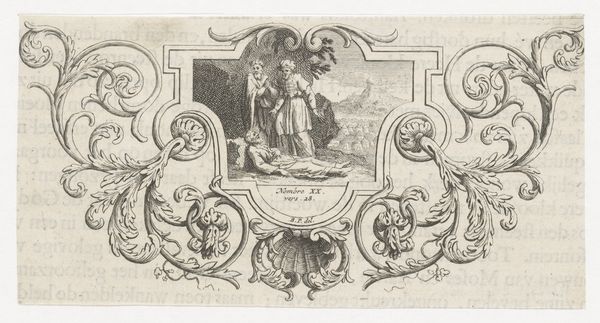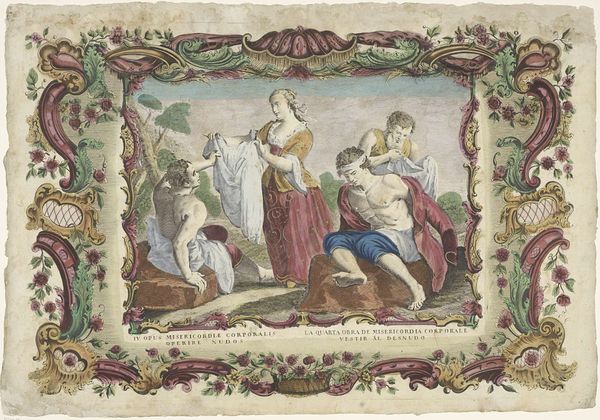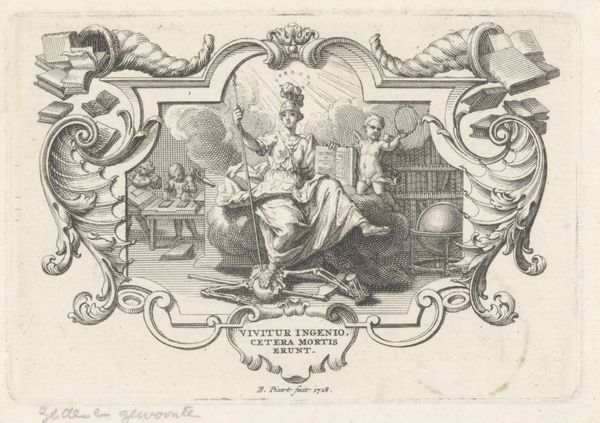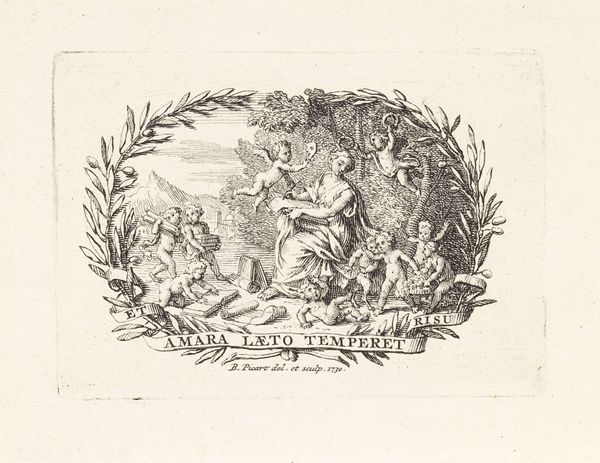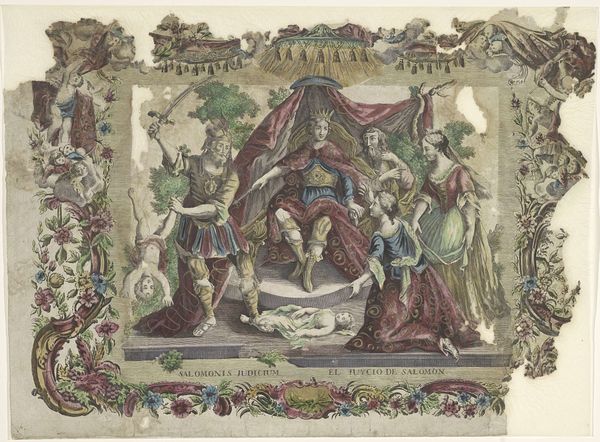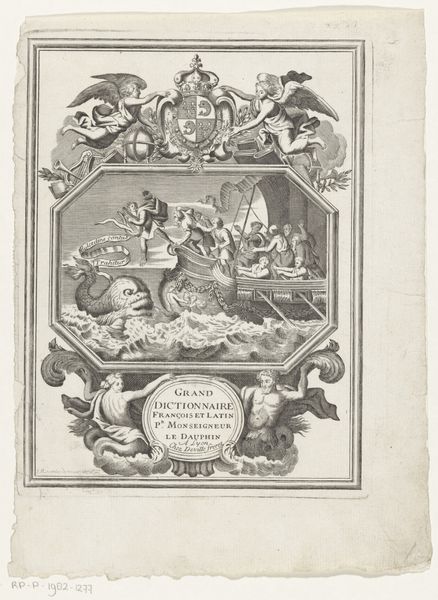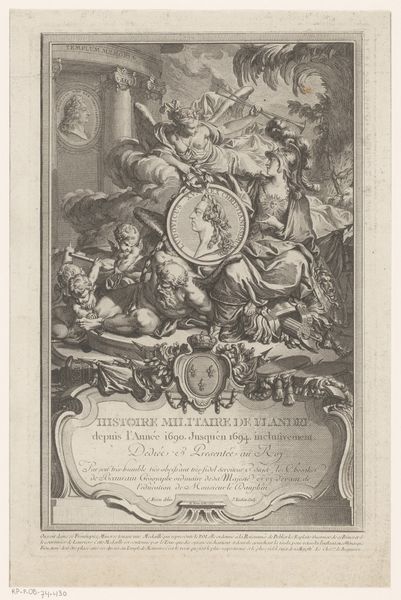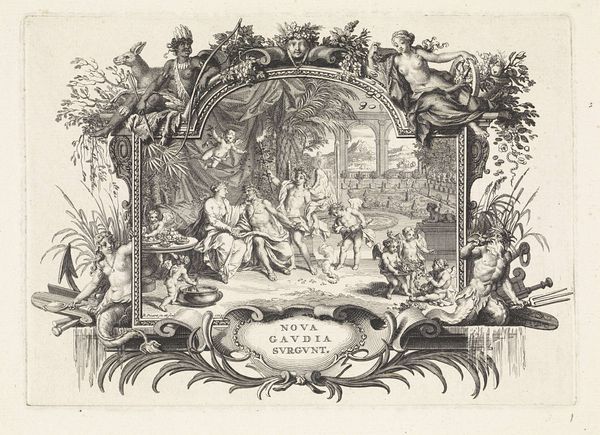
engraving
#
allegory
#
baroque
#
figuration
#
coloured pencil
#
line
#
history-painting
#
engraving
Dimensions: height 79 mm, width 119 mm
Copyright: Rijks Museum: Open Domain
This allegorical print was made by Jan Punt in 1739, using etching and engraving. Think of these processes as early forms of mechanical reproduction. A metal plate is treated with an acid-resistant coating, through which the artist scratches a design. Acid then bites into the exposed metal, creating recessed lines that hold ink. The physical properties of metal enable the reproduction of intricate lines, and the precision required speaks to the skilled labor involved. Here, the labor has been directed to a scene of ‘Personifications of Honor and Art in a Rowboat.’ The image asks, 'what good is art, if not to give honor where it is due?' Notice how the crispness of the lines lends a sense of clarity to the overall image, even though the subject matter is quite fantastical. Prints like this one were not unique objects of art, but rather circulated within a growing economy of images. So next time you encounter an early print, think about its status as a mass-produced commodity, and the debates that continue today about the role of art in society.
Comments
No comments
Be the first to comment and join the conversation on the ultimate creative platform.
